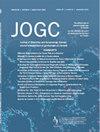Cerebral-Placental-Uterine Ratio in the Early Third Trimester as a Predictor of Small-for-Gestational-Age Birthweight: A Prospective Cohort Study
IF 2.2
Q2 OBSTETRICS & GYNECOLOGY
引用次数: 0
Abstract
Objectives
The diagnosis of late-onset fetal growth restriction is challenging, with a low detection rate using ultrasonographic estimation of fetal weight and subtle Doppler changes in commonly assessed fetal vessels. The cerebral-placental-uterine ratio (CPUR) has been reported to better predict small-for-gestational-age (SGA) birthweight. However, its use in the early third trimester has never been evaluated. This study aimed to evaluate the role of the CPUR in the early third trimester for predicting SGA at birth.
Methods
This prospective cohort study included 228 women at 280–316 weeks gestation with appropriate-for-gestational-age (AGA) fetuses between May and December 2023 in a tertiary-level hospital. The umbilical, middle cerebral, and uterine artery pulsatility indexes (PIs) were measured to calculate the cerebroplacental ratio and CPUR (CPR-PI/UtA-PI). Parameters were compared between women with AGA and SGA newborns. After determining the CPUR cutoff point, predictors of SGA birthweight were identified using logistic regression analysis.
Results
Fifty-one women (22.4%) delivered SGA infants. The optimal CPUR cutoff point for predicting SGA birthweight was 2.1 (sensitivity 88.7%, specificity 31.4%). The SGA group had significantly lower estimated fetal weight, estimated fetal weight percentile, abdominal circumference (AC), AC percentile, and cerebroplacental ratio, than the AGA group. A low CPUR was significantly more common in the SGA than in the AGA group (31.4% vs. 11.3%, P = 0.001). After multivariate analysis, a low CPUR (<2.1) was significantly associated with SGA at birth (odds ratio 4.39; 95% CI 1.88–10.44, P < 0.001).
Conclusions
Early third-trimester CPUR was an independent predictor of SGA at birth.
妊娠晚期早期的脑-胎盘-子宫比率作为小胎龄出生体重的预测因子:一项前瞻性队列研究。
目的:迟发性胎儿生长受限的诊断具有挑战性,使用超声估计胎儿体重和通常评估的胎儿血管的微小多普勒变化的检出率低。据报道,脑-胎盘-子宫比(CPUR)可以更好地预测小胎龄(SGA)出生体重。然而,它在妊娠晚期早期的使用从未被评估过。本研究旨在评估孕晚期早期CPUR在预测出生时SGA的作用。方法:这项前瞻性队列研究纳入了228名28-31+6孕周的孕妇,她们的胎龄与胎龄相符(AGA),于2023年5月至12月在一家三级医院就诊。测定脐动脉、大脑中动脉和子宫动脉(Ut-A)搏动指数(PI),计算脑胎盘比(CPR)和cpp (CPR-PI/UtA-PI)。比较AGA和SGA新生儿妇女的参数。在确定CPUR截断点后,使用逻辑回归分析确定SGA出生体重的预测因子。结果:51例产妇(22.4%)分娩SGA儿。预测SGA出生体重的最佳CPUR截止点为2.1(敏感性88.7%,特异性31.4%)。与AGA组相比,SGA组的估计胎儿体重(EFW)、EFW百分位数、腹围(AC)、AC百分位数和CPR均显著降低。低CPUR在SGA组明显比AGA组更常见(31.4%比11.3%,P = 0.001)。结论:妊娠晚期早期CPUR是出生时SGA的独立预测因子。
本文章由计算机程序翻译,如有差异,请以英文原文为准。
求助全文
约1分钟内获得全文
求助全文
来源期刊

Journal of obstetrics and gynaecology Canada
OBSTETRICS & GYNECOLOGY-
CiteScore
3.30
自引率
5.60%
发文量
302
审稿时长
32 days
期刊介绍:
Journal of Obstetrics and Gynaecology Canada (JOGC) is Canada"s peer-reviewed journal of obstetrics, gynaecology, and women"s health. Each monthly issue contains original research articles, reviews, case reports, commentaries, and editorials on all aspects of reproductive health. JOGC is the original publication source of evidence-based clinical guidelines, committee opinions, and policy statements that derive from standing or ad hoc committees of the Society of Obstetricians and Gynaecologists of Canada. JOGC is included in the National Library of Medicine"s MEDLINE database, and abstracts from JOGC are accessible on PubMed.
 求助内容:
求助内容: 应助结果提醒方式:
应助结果提醒方式:


